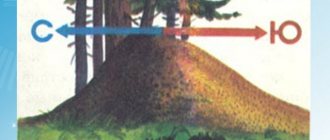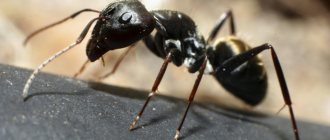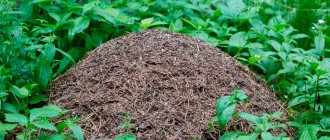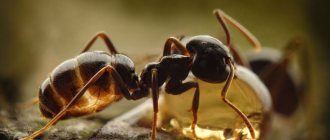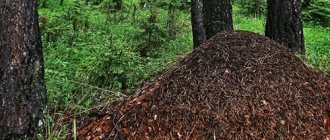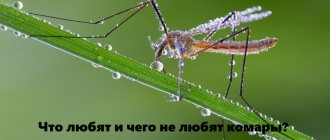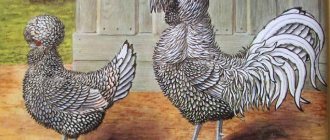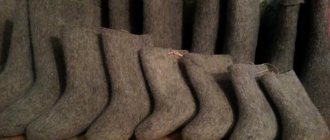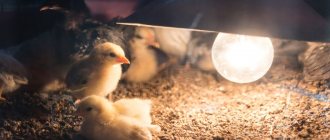- home
- Trips
- Orientation by moss and anthill
libre19 January 2013 66861
In the forest there lies a large stone-boulder, overgrown with fluffy moss on one side. Look carefully at this unusual compass, which was created by nature itself. We have already written about various signs of orienteering, orienteering in the forest and using a compass. We recommend reading these interesting articles.
Where do ants usually build an anthill?
An anthill is an excellent assistant in determining the sides of the horizon. Hardworking ants build their homes near trees on the south side. It turns out to be a fairly reliable guide. Especially in cloudy weather when the sun is not visible. So, how to navigate an anthill?
Ants are poikilothermic insects, meaning their body temperature depends on how hot the surrounding atmosphere is. Therefore, to prepare for the intense day's work, they need to get a good dose of heat. And the sun best warms up the southern part of the dome-shaped dwelling, which is also more flat compared to the part that is directed to the north and may be adjacent to a tree trunk.
Orientation by anthill
The anthill has not only an above-ground part, which hard-working insects collect from pieces of fallen leaves, sticks, needles, and soil particles, but also extensive underground “apartments.” It is there that a large family of ants waits out the unfavorable cold season. But even in winter, clearly visible mounds with a characteristic dome shape adjacent to trees can serve as a fairly reliable landmark in the forest. With some exceptions, which will be discussed below.
Thus, if you know on which side of the tree the ants build their house, then it will not be difficult to correctly navigate and determine the road that will lead where you need it.
Advice! Additional information about the sides of the horizon can be provided by moss growing on a tree near which there is an anthill. It, like lichen, prefers to settle on the north side of tree trunks; using this feature, you can further verify the correctness of your conclusions.
Internal buildings
The inside of an anthill is much more interesting. I am amazed by the smooth work of the builders, their thoughtfulness, ingenuity and tolerance. Inside, the anthill looks like a collection of passages, exits, and all kinds of cameras.
The building goes underground, is divided into 2 parts, and accommodates an entire colony of inhabitants.
- Insects spend most of their time in the upper tier and live during the warm season. The chambers are well heated, providing ideal conditions for raising offspring.
- The lower part has similar structures and goes 1-2 meters underground. There, insects spend the winter, wait out cold days, and store food supplies.
Each of these parts is divided into chambers that perform their own functions.
- Queen's room. The queen lives in it and lays eggs. She is looked after by worker ants who help lay eggs.
- Egg room. Ants lay eggs here and ensure proper conditions are provided.
- Room for larvae. Hatched ants have the shape of worms and are particularly voracious. They are placed in one chamber, several at a time. Provide food.
- Food storage room. Separately for seeds, grains, aphids, parts of other insects.
- Garbage warehouse.
- Tombs for dead ants.
- A wintering room where insects wait out the cold at rest.
The cells are connected to each other by numerous passages; there are several exits, carefully guarded by soldiers. With the approach of danger, the onset of cold weather, the openings of the anthill close. A cross-sectional photo of the wonderful structure is shown below.
Anthill in section
Guide to the shape of an anthill
Often the anthill is located in the south direction from a tree, stump, or bush, and this makes it easier to navigate. However, in treeless areas, it will also help determine the choice of the desired direction. It was already mentioned above that the dome of the ants’ home is asymmetrical.
South direction of the anthill
How to determine where north is: the slope facing this direction is steeper than the one facing south. This is due to the fact that a steep slope better protects the building from the effects of the cold north wind, while a gentle slope is warmed up more easily and quickly by the sun.
In any case, both in the forest and in open areas, a more accurate determination of the cardinal directions is ensured by examining not one, but several nearby anthills. You need to mentally draw a longitudinal line through the center of each dome and see in which direction they all go. This way you can more accurately determine the north-south direction, and, consequently, east-west.
Exterior view of the ant house
What ants build an anthill from can be seen from the outside - dry twigs, sticks, blades of grass, leaves, piles of earth, moss and other building materials that hardworking insects can carry.
From above, the house looks like a cone-shaped mound with small holes - entrances. This shape allows the anthill to warm up well in the sun, not get wet in the rain, and gain access to oxygen.
The anthill rises above the grass so that the surrounding vegetation does not block the sun's rays. Over the years, they build it up to several meters in height. Droplets of rain, falling on a numerous layer of sticks, twigs, leaves, roll down and do not penetrate inside. Open entrances, guarded by a large army of soldiers, serve as ventilation shafts through which air constantly circulates.
Appearance of an anthill Scientists have recorded the largest structure in the Tomsk region - 3 m in height, 5 m in diameter. The anthill supposedly took 20 years to build.
Incorrect anthills for orientation
Is an anthill always an impeccable landmark? Unfortunately no. And this, for the most part, depends on its location. If the ants have built their home on the edge of a dense forest or near a road, then it is better to look for another dome-shaped structure to use as a landmark.
Anthill on the edge of the forest
Note! A family of forest workers always locates their house in the most optimal way in order to more efficiently use solar heat, but in these cases the direction of the main axis of the anthill can be shifted and run from west to east or in the north-west direction. Then you should use other methods. For example, branches facing south grow thicker on trees.
Remember this method yourself and tell your children how to determine the cardinal directions by the location of the anthill, its shape, and other signs, so that if you find yourself in a difficult situation, you can use the information received. It is useful to demonstrate to children visually, with a device in hand, that natural landmarks are indeed quite accurate. You can also use the hour hand of a wristwatch for clarity. It is also necessary to explain to children that anthills cannot be destroyed, since their inhabitants bring great benefits to the forest.
Have you learned anything new? Share in the comments!
Forest “light bulbs” and “lighthouses”
In order not to get lost in the forest, you need to select clearly visible landmarks in advance, which help determine the location, direction of movement and measure the distance to the intended points along the route.
In areas of the forest affected by honey fungus, there are peculiar, unusual landmarks - “light bulbs”. You are walking in the silence of the forest at night, and suddenly in the impenetrable darkness bright lights of phosphorescent light flash: the growing ends of the rhizomorphs of honey mushrooms glow.
Rhizomorphs are plexuses of honey fungus mycelium, very long, shiny black-brown cords, similar to electrical cords. As many rhizomorphs are around, there are as many “light bulbs”. Honey fungus usually settles on stumps and other rotting remains of wood. The mycelium of the honey fungus, covered with a dense shell, is highly branched under the bark of trees, especially weak ones, penetrates with its branches into living wood, sucks the juices out of it and destroys the tree. The ends of the mycelium (rhizomorphs), protruding outwards, glow like bright miniature light bulbs.
On a summer night, forest “beacons” can indicate the way along a winding taiga path. These are rotten things, sparkling with phosphoric fire. Rotten stumps phosphorescent most brightly. Trembling luminous streams “flow” from top to bottom along them. Myriads of bacteria nest here. Bioluminescent microbes contain complex chemicals - luciferin and luciferose.
We suggest you read: Who is bigger, a bumblebee or a hornet?
It doesn't stop around the clock. So, in order to avoid wandering in the forest at night when returning from a route taken during the day, it is advisable to remember in advance the location of rotting trees or dilapidated stumps, which will serve as kind of light indicators along the way; in addition, orientation by moss or anthill will help you find the right direction.
How to determine cardinal directions using a watch?
According to the sun and the clock
- Place the dial of the device so that the hour hand points clearly to the Sun. ...
- Next, you need to calculate the angle formed between the hour hand and the 12 o'clock mark on the dial. ...
- The line dividing the resulting angle will point south.
Oct 29
2022 Interesting materials:
What are the names of the 2 angels on their shoulders? What is the name of the 7 deadly sins anime? What is the name of Abai Kunanbaev's brother? What is the name of Lil Peep's brother? What are the names of Borodin's children? What are the names of Naruto's daughter and son? What is the name of Zayn Malik's daughter? What are the names of Steklov's daughters? What is the name of Polina Gagarina's daughter? What is John Cena's name?
